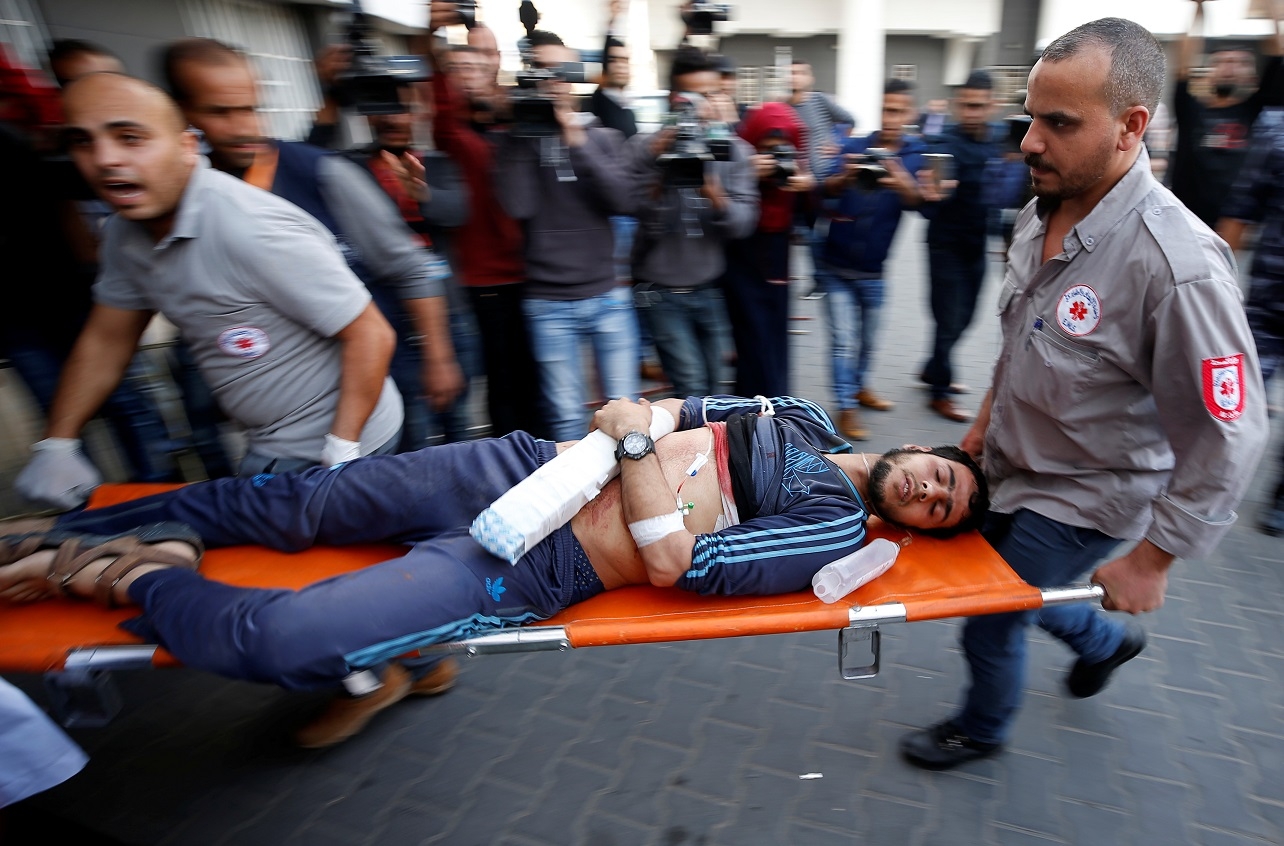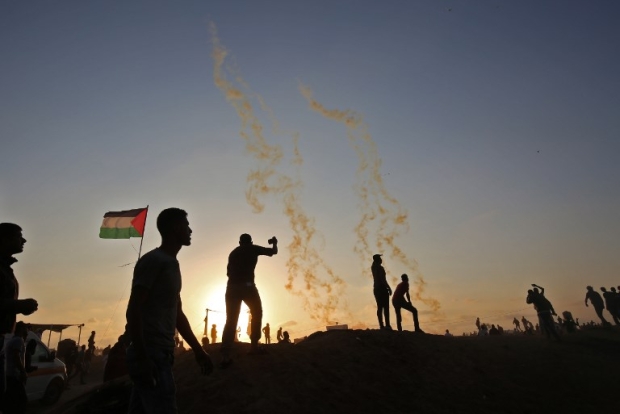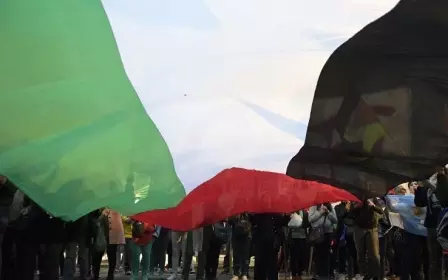Where is Palestine’s Martin Luther King? Shot or jailed by Israel

I was born and grew into adulthood at Gaza’s Khan Younis Camp, until leaving in 2006 to complete my PhD in refugee studies. That year, on a three-week US speaking tour, I spoke to diverse audiences about the situation in occupied Palestine, describing the daily realities of life under Israel’s military occupation.
On several occasions, after my presentation, I was asked: “Where is Palestinian peaceful resistance? Why is there no Palestinian Mahatma Gandhi or Martin Luther King?”
I was puzzled by such questions, for nonviolent struggle is very deeply rooted in Palestinian history. It was widespread in the 1930s during Britain’s colonisation of Palestine, with the famous general strike - the longest in modern history - and boycott movements, both of which were brutally suppressed by British authorities. Numerous strike leaders were ultimately killed, imprisoned or exiled.
Resisting violent occupation
Non-violent resistance has been a mainstay of the Palestinian struggle since the destruction of Palestine and the creation of Israel. After the 1967 Naksa, under Israel’s colonisation of yet more Palestinian lands conquered by its army, and up to the 1987 Intifada, Palestinians repeatedly invented creative outlets for resisting violent occupation.
A major channel of resistance was developing alternative institutions and leadership. In response, the occupying power deported hundreds of Palestinians, including municipal leaders, university professors and leaders of women’s organisations and trade unions.
Legal scholar Lisa Hajjar documented the detention of more than half a million Palestinian residents of the occupied territories from 1967 to 1987 (at a time when the total Palestinian population there was about 1.5 million), the deportation of more than 2,000 Palestinians and the demolition by Israel of more than 1,560 Palestinian homes. All forms of educational and cultural freedom were tightly circumscribed.
Since 30 March, tens of thousands of Palestinian MLKs have emerged in full view of the world and heads of western governments, demonstrating peacefully on the fence of the Gaza ghetto
The Palestinian peaceful resistance continued in different forms leading up to the First Intifada of 1987, when thousands engaged in collective civil disobedience and nonviolent resistance, supported by local committees all over Palestine.
Many aspects of the Second Intifada were acts of nonviolent resistance, including the weekly protests held since the early 2000s in the West Bank villages of Bilin, Nilin, Budrus and Jayyous, to name but a few. Entire villages have embraced nonviolence as the only strategy for resisting the occupation.
Over the years, Bilin has become well known for introducing creative tactics of nonviolent resistance. Protesters have chained themselves to olive trees slated to be uprooted to make way for the separation wall. They have locked themselves in cages placed on their land, compelling the military to haul them away with cranes. They have used performance and humour, or chained themselves to steel pillars on the ground.
Changing oppressors
Palestinian nonviolence has been practised for more than a century now, in the face of changing oppressors, and continues today despite Israel’s invariably brutal response - but world memory seems short.
My answer in 2006 to questions about Palestinian MLKs and Gandhis was as simple and short as it is today. Based on what I’ve experienced firsthand in the camps of Gaza, I responded that thousands of them had been shot and killed by Israel, tens of thousands had been disabled, and hundreds of thousands had been jailed.
Today, 12 years after that speaking tour, Palestine is presenting the world with another model of its people’s old, yet new, peaceful resistance. Since 30 March, tens of thousands of Palestinian MLKs have emerged in full view of the world and heads of western governments, demonstrating peacefully on the fence of the Gaza ghetto. They have demanded that the world pay attention to more than a decade of an illegal, immoral and inhumane blockade that has taken the lives of hundreds of innocents and brought Gaza’s economy to its knees.
The Great Return March has also called for the recognition of Palestinians’ inalienable right to return to the homes and lands from which they were driven seven decades ago.
These peaceful demonstrations and sit-ins, held in the buffer zone imposed by Israel hundreds of yards from the outer perimeter - the cage - of Gaza’s fence, have been a legendary epic of resistance, celebrating Palestinian survival, traditions, culture and history. Protesters of all ages have sung, danced, shared stories, flown kites, cooked traditional meals and recounted memories of what was once their homeland, all the while praying for and dreaming of return.
Days of unity and hope
The tent memorialising my village, Beit Daras, depopulated and demolished in 1948, was full of villagers of all generations from various camps and towns in Gaza. They cooked the traditional maftoul, a couscous that was very popular in Beit Daras, and shared it with other villagers in nearby tents. They staged Palestinian weddings and danced the traditional dabka into the night. These were days of unity and hope, of happiness and dreams so long obliterated from Gaza’s daily life.
The jailer’s response has been brutal. Israeli army snipers, stationed behind multiple stretches of barbed wire, in jeeps and in military towers, fully armed and with no imminent threat to their lives, targeted demonstrators, killing at least 130 and wounding thousands more.
Some of my own relatives and friends are among the dead, as well as multiple paramedics, journalists, photographers and students. Those hunted down include women, minors and children. On 14 May alone, Israeli forces killed 62 protesters and wounded more than 3,000.
While Palestinians are not numbers, these numbers reveal the heinous crime perpetrated against them as their freedom to nonviolently protest was mowed down by gunfire.
During the Great Return March, Palestinians have eloquently told the world - including the dysfunctional Palestinian Authority - that Palestinian civil society is alive, strong and capable, despite concerted efforts to sideline the issue of Palestine. The question is no longer: “Where is Gaza’s civil society and where are its leaders?” Rather, the Great Return March has powerfully posed different questions: “Where is the world? Where is the international community? Where are its leaders?”
Denials from world leaders
As Gaza sounded its mighty scream on 14 May, its Gandhis were picked off one by one by Israeli snipers, while just dozens of miles from the fence, Jared Kushner and Ivanka Trump legalised Israel’s occupation of Jerusalem in an abhorrent violation of international law. Once again, western leaders pointedly looked away.
Israel’s response to this powerful move has continued and expanded the pattern of 1948, when its destruction and ethnic cleansing of Palestine turned Palestinians into the largest refugee group in the world. It is these refugees and their descendants who have been marching for their rights along the razor-wire fences penning in Gaza’s residents. It is these refugees and their descendants who are resetting the world agenda, at an inconceivable price, in the face of denials and dismissals from world leaders.
Sounding its amazingly resilient voice, Palestinian civil society is reaching out to the world’s civil society to call those leaders to account.
- Ghada Ageel is a visiting professor at the University of Alberta Political Science Department (Edmonton, Canada), an independent scholar, and active in the Faculty4Palestine - Alberta. Her new book “Apartheid in Palestine: Hard Laws and Harder Experiences” is forthcoming with the University of Alberta Press - Canada.
The views expressed in this article belong to the author and do not necessarily reflect the editorial policy of Middle East Eye.
Photo: A Palestinian wounded at the Israel-Gaza border is carried into a hospital in Gaza City on 27 April 2018 (Reuters)
New MEE newsletter: Jerusalem Dispatch
Sign up to get the latest insights and analysis on Israel-Palestine, alongside Turkey Unpacked and other MEE newsletters
Middle East Eye delivers independent and unrivalled coverage and analysis of the Middle East, North Africa and beyond. To learn more about republishing this content and the associated fees, please fill out this form. More about MEE can be found here.






